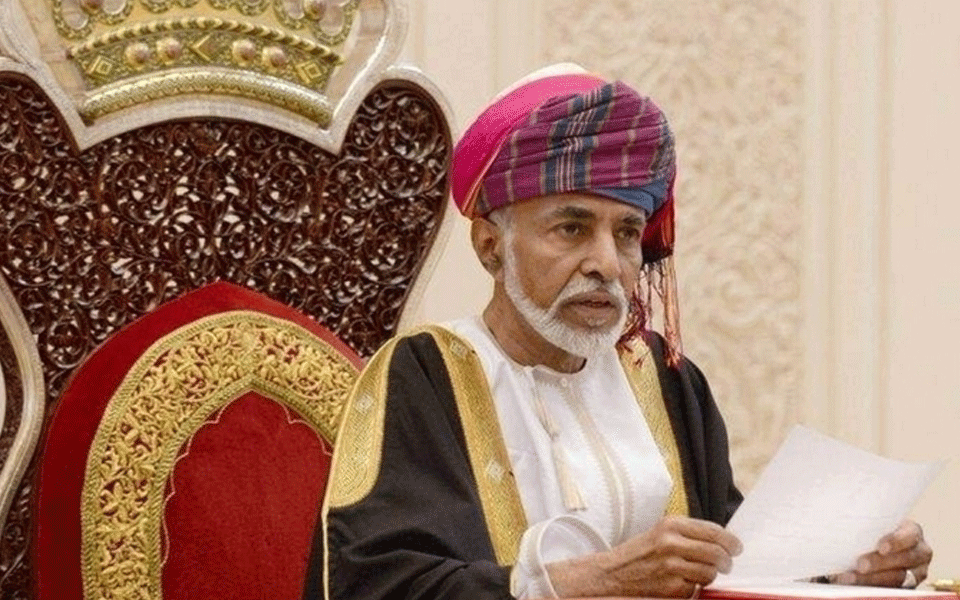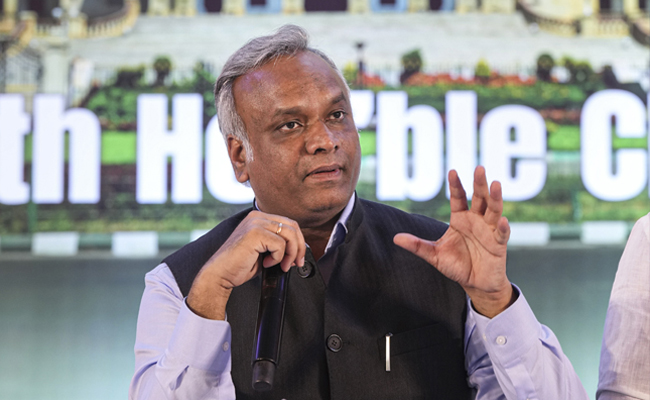Muscat: Sultan Qaboos, the longest-reigning leader of the modern Arab world, has died at the age of 79, the royal court said Saturday.
"With great sorrow and deep sadness... the royal court mourns His Majesty Sultan Qaboos bin Said, who passed away on Friday," the court said in a statement. Qaboos, who has ruled since 1970 when he deposed his father in a palace coup, had been ill for some time and had been believed to be suffering from colon cancer.
He left no apparent heir. He was unmarried and had no children or brothers. It is not clear who will succeed Qaboos, whose country has a distinct method of choosing the next ruler.
According to the Omani constitution, the royal family shall, within three days of the throne falling vacant, determine the successor. If the family does not agree on a name, the person chosen by Qaboos in a letter addressed to the royal family will be the successor.
The sultan should be a member of the royal family, as well as "Muslim, mature, rational and the legitimate son of Omani Muslim parents".
Local experts say that more than 80 men meet the criteria, but one name stands: Asad bin Tariq. Tariq, 65, had been appointed deputy prime minister for international relations and cooperation affairs in 2017.
The move was seen as a clear message of support to the sultan's cousin and "special representative" since 2002. Qaboos transformed the Arabian Peninsula nation from a backwater into a modern state while pursuing a moderate but active foreign policy.
Having played a role in Iran's nuclear deal with world powers while preserving its membership in the Saudi-led Gulf Cooperation Council, Oman has emerged as the Gulf's discreet mediator.
It remains to be seen whether the next ruler will take the same moderate approach in a region often in turmoil.
Let the Truth be known. If you read VB and like VB, please be a VB Supporter and Help us deliver the Truth to one and all.
Belagavi (Karnataka) (PTI): Karnataka Minister Priyank Kharge on Wednesday said the state government is working to appoint an agency to manage clean drinking water units in rural areas.
The state Rural Development and Panchayat Raj minister was responding to a question by Hirekerur MLA U B Banakar in the legislative assembly.
"In the rural areas of the state, many clean drinking water units have been set up under corporate social responsibility (CSR) grants, including contributions by MLAs and MPs, and handed over to gram panchayats. After the maintenance period, problems have arisen in keeping these units operational," Priyank said.
He added that a proposal has been made to award a maintenance contract to one of the country’s reputed drinking water unit manufacturing companies, but so far, no companies have come forward to take up the work.
ALSO READ: Woman threatens to end life as police official refuses to accept love proposal, FIR registered
"The government is continuing its efforts and will resolve this problem soon," he said.
On a query regarding fluoride content in water, the minister said water quality testing is being conducted monthly in all zilla panchayats.
"Laboratories have been opened for this purpose. Around 6.5 lakh water samples have been tested across the state, and water testing kits have been provided to villages," he added.





